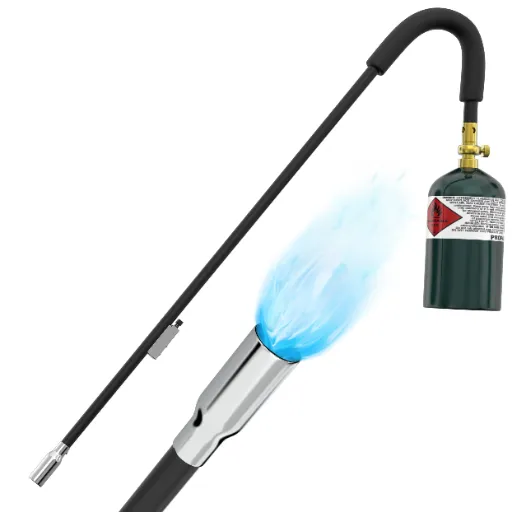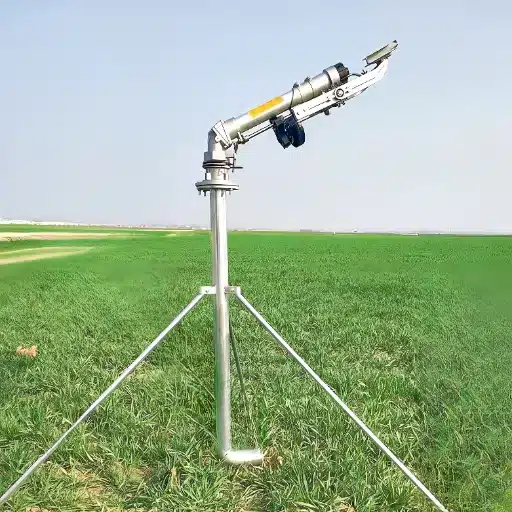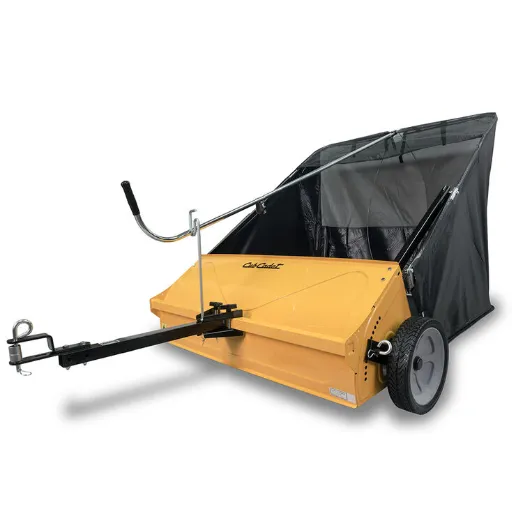As our lifestyles become faster, there’s an increase in the expectations around production efficiency and safety. In the case of food production, strong advances in mechanization can be considered one of the revolutions which are sure to enhance the existing system of quality control, safety, and overall productivity. In this regard, food system industries are optimizing the processes of food development, storage, and circulation. The purpose of this blog is to explain the advantages automation brings to food processing, by considering its effectiveness within food production, human fault reduction, and the ever changing field of health and safety. Knowing such issues, the readers will understand how food production automation will develop the food industry and what it means for the end customers and producers.
What is Automation in the Food Industry?

Automation of Food Processing Systems
According to Klatt, Becker, and Bender (2021), food processing automation is the integration of technology into the majority of the activities of the food industry. Importantly, this encompasses robotic systems, machines, and computers fitted with software to automatically perform tasks such as packaging, cooking, sorting, and assessing quality and temperature. In this manner, the efficiency, precision, and uniformity of production are enhanced, while the role of workers and the number of errors made are decreased. As a result of the advances in such technologies, food producers may increase the effectiveness of their processes, comply with strict safety requirements, and respond to customer needs faster.
Automation in the Modern Food Industry
Automation is very important in the food industry since it improves efficiency and facilitates safety. It minimizes the need for human labor which decreases human error and increases accuracy in many operations. Automated equipment can perform complex and monotonous operations like sorting, measuring, and controlling and there is always uniformity in output quality of the product. In addition, automating these systems allows manufacturers to comply with all mandated requirements and easily respond to shifts in consumer’s sentiments.
Instances of Automated Food Systems
Driven by advancing technologies in food systems, automated food systems refer to automated methods of food production and processing. Tasks such as sorting and packing food products and transferring materials and semi-finished products inside production facilities are done using robotic arms and automated guided vehicles respectively. Other high-quality inspections are automated and conducted within short periods. Also, the automating blending machines are used in the food industry to produce consistent products. Furthermore, modern, real-time telemetry systems support and empower production processes. These systems enable tracking throughout the production process, making it possible to trace the history of any product input. This leads to simpler processes, lower costs, and higher safety and quality of food products.
How Does Automation Optimize the Manufacturing Process?

Enhancing Productivity with Robotics
With speed and precision that surpasses human capability, robotics allows for the completion of tasks during the manufacturing process which enhances the overall production process. A robot does not get tired, therefore the machine will work for longer periods and increase output. They deal with every aspect of the production process, from initial storage of raw materials to packing the final products themselves, thereby assuring precision and minimizing wastage. Additionally, companies can re-allocate robots to other programs and thus adapt to production changes quickly without sacrificing efficiency and throughput. As a result, it not only enhances the operations fast but also improves the operations’ quality and safety.
Enhancing the Production Line
Integrating advanced technology to streamline the production line operations is referred to as automation. Automated systems help in alleviating bottlenecks where work processes are and tasks are dependent on human actions. With such coordination, there are quick movements from one activity of production to another, resource utilization is maximized, and uniformity of the output is maintained. This is because more and more organizations are moving towards automation in production lines to increase productivity while reducing idle time and cost of production and are more capable at meeting demand.
Raising the level of Throughput and Efficiency
With automation, the manufacturing process becomes perfect, ie it is more accurate; there are fewer mistakes, and productivity is higher due to the use of automatons and intelligent systems. It focuses on faster processes by reducing human participation thus enhancing higher operational efficiency overall. This leads to quicker production rate and lower costs while retaining quality.(Recommended products:vegetable processing machine)
What Are the Advantages of Automation in Food Manufacturing?

Bolstering Food Safety and Quality
Automation in food production has increased food safety and quality since the item is produced with minimum interactions with the human making chances for any contamination low. Dynamically on board advanced sensors and monitoring systems also preserve quality by providing exact production processes which entail the precise control of critical parameters such as temperature and ingredient measurement. Furthermore, automation facilitates effective and repeatable cleaning and sanitizing processes, offering further protection of the food products’ integrity.
Ensuring Traceability and Compliance In Food Production
There is much to gain in food manufacturing through the integration of industrial technology. Among them are increased efficiency, better food hygiene, and improved product quality. Automation decreases the likelihood of contamination because of the reduction in the level of human contact and it also assists in maintaining uniformity through sophisticated control systems. Furthermore, as every phase is accurately recorded and controlled within reliable parameters, automation facilitates traceability and compliance with hygienic standards within the process.
Increasing Product Quality and Consistency
Completing tasks manually is being rendered ineffective in today’s world and is increasingly viewed as time charged with high risk. The incorporation of automation in food manufacturing enhances safety features, maintains traceability and boosts product quality. Automation lowers human exposure in the production environment, thereby reducing contamination, and employs cutting-edge sensors for precise quality control. Automation contributes complete process records which assist in compliance with legal requirements as well.
How Does Automation Impact Food Packaging?

Innovations in Food Packaging Automation
Aspects of automation are said to enhance food packaging by automating workflows, improving efficiency and maintaining the standards of the packaging. It utilizes sophisticated machines which are able to pack products in a short period of time and with minimum wastage and optimal protection of the product. They can also work around several types of packaging, which allows for a variety of products to be manufactured in an automated environment with a high degree of cleanliness and safety. Furthermore, automation enables the use of alternative materials that do not damage the environment in any way when packaging products.
Sustaining Food Safety Levels
Automation promotes food safety in food risk management by decreasing reliance on human involvement as well as being able to control food packaging with a higher degree of accuracy. Automated systems have superior effectiveness in detecting contaminating substances and controlling the process of packaging within sanitary conditions, hence preventing foodborne infections. This technology guarantees compliance to safety standards with respect to packaging operations as proper records of the processes are kept.
Waste Minimization and Increase of Sustainability
The incorporation of automation technologies in food packaging contributes to environmental protection through waste management and enhanced efficiency of material utilization. Modern equipment is capable of measuring and dispensing packing materials accurately and as needed. Moreover, automation facilitates the implementation of green materials, simplifying the packaging design stage and minimizing the level of harmful impact of food manufacturing processes on the environment. Consequently, these improvements make automation not only ecologically beneficial but also economically viable business strategy given the changing market direction towards sustainability.
What Are the Global Trends in Food and Beverage Automation?

Robotic Solutions: The Future for Food and Beverage Industries
One of the trends that guarantees productivity and is currently taking root in the global economy is the introduction of robotic solutions in the automation of food and beverage production processes. Adopting robots in food manufacturing allows for more efficient procedures such as sorting, packing, and even quality control during packaging processes; thus, robots are proving to enhance the speed and precision of specific tasks in food production and packaging stages. Thanks to their flexibility, manufacturers can easily switch between different products and packaging types. Furthermore, robotic solutions assist in mitigating manpower shortages or mistakes, making them exceptionally economical in the long run. Such progress predicts the inevitable expansion of machine and AI capabilities enhancing robotic systems’ efficiency in food and beverage fields in the near future.
Real-Time Monitoring Systems
The use of real-time monitoring systems within food and beverage automation is transforming the industry owing to the availability of continuous and reliable information. These systems help manufacturers to oversee the production processes, identify gaps in production, and maintain the quality of the finished products without delays. Real-time monitoring minimizes downtime and waste by quickly identifying and addressing problems using IoT and sensor technologies. This strategy improves operational efficiency while maintaining safety and quality of production, leads to effective resource utilization, and increases customer satisfaction.
Impact on the Supply Chain and Logistics
The application of automation technologies such as robotic systems and monitoring systems greatly improves the supply chain and logistics in the food and beverage sector. With these technologies deploying quicker production and more accurate assembly, lead times are shortened, mistakes are reduced, and efficiency is increased. They ensure that products are delivered in the right timeframe and the quality of the products remains their focus during distribution, thus improving the entire supply chain and logistics system.
Reference sources
Frequently Asked Questions (FAQs)
Q: What is the importance of automation in the food and beverage industry?
A: In the food and beverage industry, automation is important in the sense that it simplifies the food manufacture process, increases productivity, and ensures that food which meets the necessary quality standards is made. Automation solutions enable food factories to cut their costs without compromising on quality or human errors.
Q: How does automation improve food production?
A: Automation improves food production through the application of sophisticated processing machinery and control systems throughout the organization’s structural hierarchy in order to improve particular workflows. It also leads to the extension of production schedules, greater precision, and the capability to manufacture great products consistently to meet the expectations of the international marketplace for food.
Q: Are there any automation solutions available for the food and beverage sectors?
A: The food and beverage industries can implement various automation solutions such as robotic automation and automated machinery or complex control systems. With these insurances, control of the food manufacturing process is more accurate allowing food manufacturers to automate more processes and improve overall efficiency.
Q: What is the key important of process automation within food businesses?
A: The key important of process automation within food businesses is that it helps food companies to improve their productivity levels, cut their operational costs, and achieve or even exceed their set quality control requirements. Moreover, automation systems allow food businesses to respond effectively to changing market needs and even new regulations.
Q: In what way can automation systems contribute to the improvement of food safety?
A: Automation systems contribute to the improvement of food safety by standardizing the production processes and the chances of having contaminants are minimal. Manual tasks are made less strenuous when repetitive operations are performed within food-processing machines that closely monitor heating temperatures, mixing speeds, and other such variables to ensure that the quality of the end product is not compromised.
Q: What are the advantages of using robotic automation within the food manufacturing industry?
A: In the food manufacturing industry, robotic automation presents several advantages such as faster production rates, better precision and, flexibility when putting together the different production processes. Precise and delicate tasks which robots are capable of doing can also be performed in extremely noxious conditions hence less risk will be posed to human sources while at the same time ensuring quality output.
Q: What automation strategies do food and beverage manufacturers have?
A: Food and beverage manufacturers implement automation solutions by integrating advanced automatic control into their operations. Often companies cooperate with specialized providers like Rockwell Automation to integrate different components into a more automated process.
Q: What obstacles are presented for food businesses when integrating automation?
A: Food companies adopting automation may encounter challenges such as the cost of the investment, engagement of course for employees or some of these problems during the transition phase. Nonetheless, most often the additional value of enhanced efficiencies and product advancements balances out the negatives.
Q: What are the advantages of process automation solutions for food and beverage manufacturing?
A: Process automation solutions help food and beverage manufacturing such as producing schedules for running production lines, eliminating waste and standardizing products. Such solutions permit manufacturers to achieve the required production in volumes that are appropriate to the challenges of the established applicable laws and norms of the industry.










